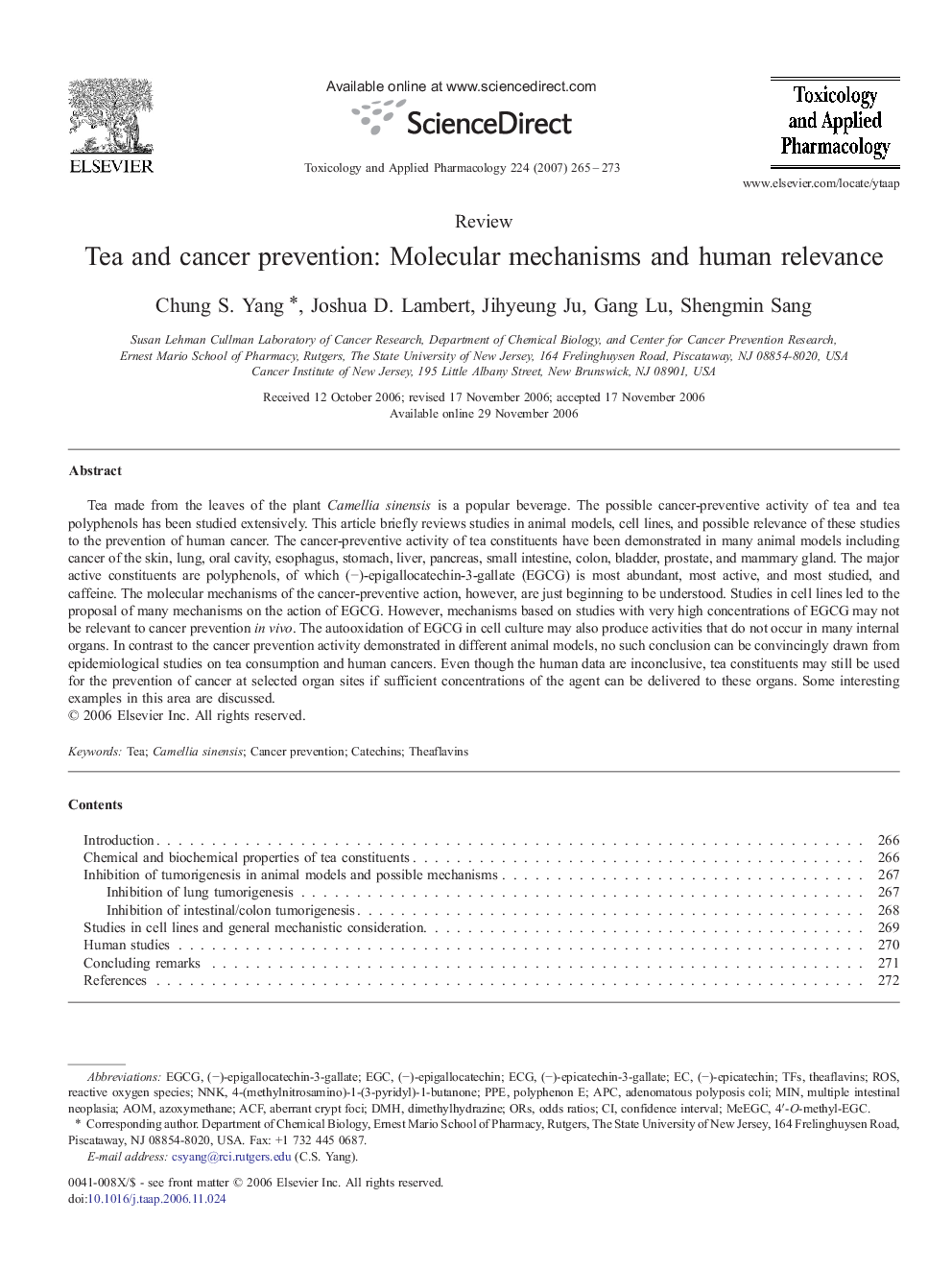| کد مقاله | کد نشریه | سال انتشار | مقاله انگلیسی | نسخه تمام متن |
|---|---|---|---|---|
| 2571669 | 1128645 | 2007 | 9 صفحه PDF | دانلود رایگان |

Tea made from the leaves of the plant Camellia sinensis is a popular beverage. The possible cancer-preventive activity of tea and tea polyphenols has been studied extensively. This article briefly reviews studies in animal models, cell lines, and possible relevance of these studies to the prevention of human cancer. The cancer-preventive activity of tea constituents have been demonstrated in many animal models including cancer of the skin, lung, oral cavity, esophagus, stomach, liver, pancreas, small intestine, colon, bladder, prostate, and mammary gland. The major active constituents are polyphenols, of which (−)-epigallocatechin-3-gallate (EGCG) is most abundant, most active, and most studied, and caffeine. The molecular mechanisms of the cancer-preventive action, however, are just beginning to be understood. Studies in cell lines led to the proposal of many mechanisms on the action of EGCG. However, mechanisms based on studies with very high concentrations of EGCG may not be relevant to cancer prevention in vivo. The autooxidation of EGCG in cell culture may also produce activities that do not occur in many internal organs. In contrast to the cancer prevention activity demonstrated in different animal models, no such conclusion can be convincingly drawn from epidemiological studies on tea consumption and human cancers. Even though the human data are inconclusive, tea constituents may still be used for the prevention of cancer at selected organ sites if sufficient concentrations of the agent can be delivered to these organs. Some interesting examples in this area are discussed.
Journal: Toxicology and Applied Pharmacology - Volume 224, Issue 3, 1 November 2007, Pages 265–273